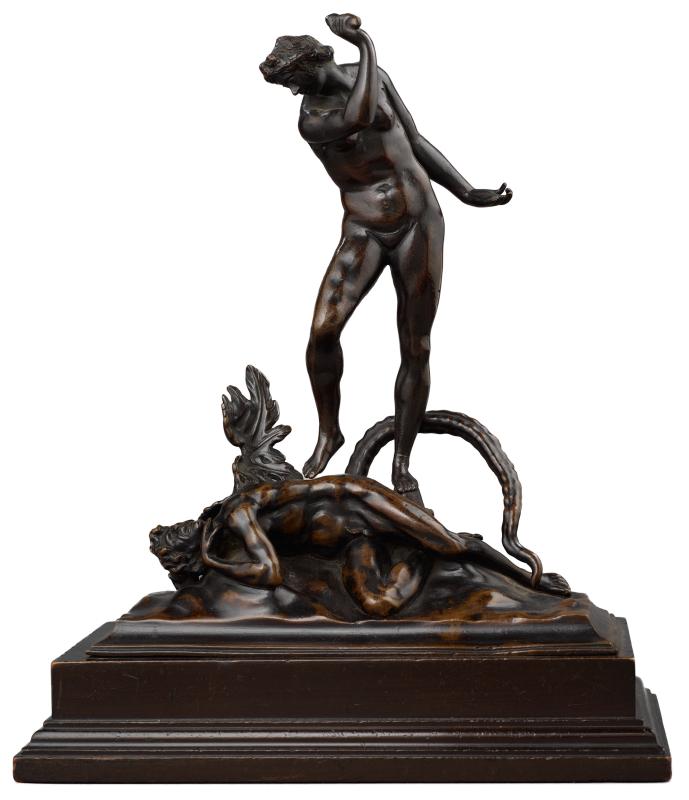
A number of casts then believed to be after Benevenuto Cellini's Virtue Punishing Vice were sold to American collectors in the early years of the twentieth century (see a similar cast in the National Gallery of Art, Washington). In 1914, when Morgan's collection was exhibited at the Metropolitan Museum of Art, it was described as "almost certainly the work of the master."
The original model for the bronze group is Pierino da Vinci's statuette of Virtue and Vice, ca. 1550 (for example, see a cast in the Victoria & Albert Museum). The present bronze lacks the club wielded by the figure of Vice, although she holds the stub of the instrument in her raised hand. The devil's wings are more elaborate than in other casts (see for example, the cast in the Bode Museum, Berlin), and the addition of an elaborately sinuous tail is remarkable. Other details suggest the present work is a late cast that has been embellished, not the least of which is the awkward placement of the figure's right arm and hand. It is entirely possible that the cast dates to the early nineteenth century if it was indeed in the Hayden family collection for around eighty years as claimed by Francis Seymour Haden.
Woman (Virtue) stepping on male winged figure with a tail (Vice).
